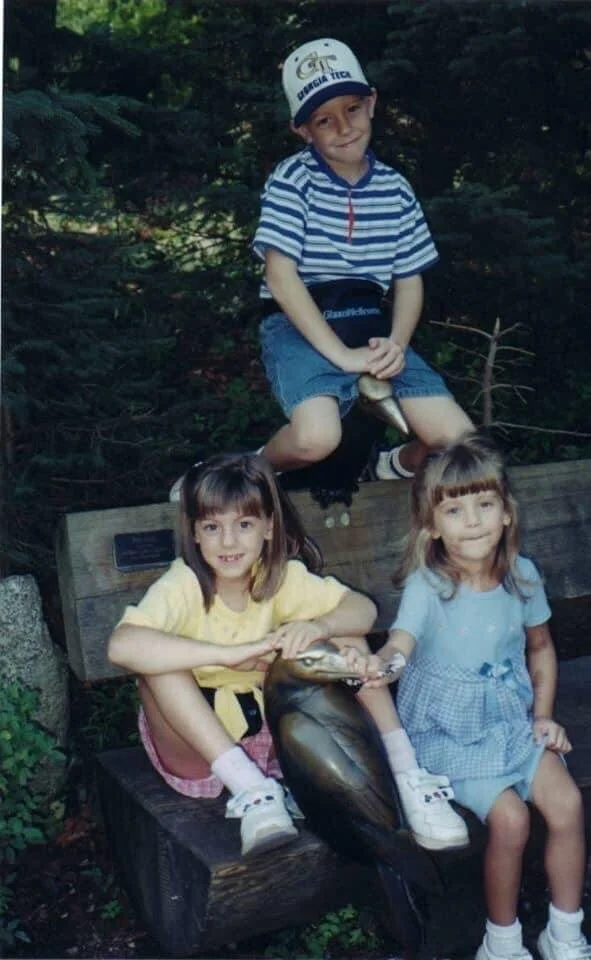I am very fortunate for my circumstances and where I am today. I can hold down a full-time job, I’m in a healthy relationship, and I have phenomenal friends and family for my support system. I’ve found my voice in advocacy thanks to the disabled community that has embraced me. This was not always the case.
Growing pains always had a different meaning to me. I used to be able to run, jump, and play without a care in the world. I had so many changes during my childhood due to my disease. With McCune Albright Syndrome, it’s a very active disease from birth to young adulthood before it plateaus with occasional flare ups as an adult.
It wasn’t an easy thing for me to accept my circumstances. I remember how many times I wish I had a new body, and how things could be so much different. The internalized ableism I experienced took a lot of time to unlearn, and I’m still working on it through therapy. I will still push myself to be independent to a fault just so I don’t inconvenience someone else; to the point that I over exert myself resulting in hurting myself emotionally or physically.
Today, I have bad days, like anyone else, but my good days are better because I have learned to listen to my body and found different combinations on how to help my body recover. I’ve had to roll with the punches more often than not, but I don’t want that for my disabled friends. I want a more accessible world, and to get there we must learn from the disabled experience through storytelling.
Reading suggestions:
The Pretty One: On Life, Pop Culture, Disability, and Other Reasons to Fall in Love with Me by Keah Brown
From the disability rights advocate and creator of the #DisabledAndCute viral campaign, a thoughtful, inspiring, and charming collection of essays exploring what it means to be black and disabled in a mostly able-bodied white America.
Keah Brown loves herself, but that hadn’t always been the case. Born with cerebral palsy, her greatest desire used to be normalcy and refuge from the steady stream of self-hate society strengthened inside her. But after years of introspection and reaching out to others in her community, she has reclaimed herself and changed her perspective.
Disability Visibility: First-Person Stories from the Twenty-first Century Edited by Alice Wong
From Harriet McBryde Johnson’s account of her debate with Peter Singer over her own personhood to original pieces by authors like Keah Brown and Haben Girma; from blog posts, manifestos, and eulogies to Congressional testimonies, and beyond: this anthology gives a glimpse into the rich complexity of the disabled experience, highlighting the passions, talents, and everyday lives of this community. It invites readers to question their own understandings. It celebrates and documents disability culture in the now. It looks to the future and the past with hope and love.
Sitting Pretty: The View from My Ordinary Resilient Disabled Body by Rebekah Taussig
A memoir-in-essays from disability advocate and creator of the Instagram account @sitting_pretty Rebekah Taussig, processing a lifetime of memories to paint a beautiful, nuanced portrait of a body that looks and moves differently than most.
Writing about the rhythms and textures of what it means to live in a body that doesn’t fit, Rebekah reflects on everything from the complications of kindness and charity, living both independently and dependently, experiencing intimacy, and how the pervasiveness of ableism in our everyday media directly translates to everyday life.
What Doesn't Kill You: A Life with Chronic Illness - Lessons from a Body in Revolt by Tessa Miller
Whether the illness is arthritis, asthma, Crohn's, diabetes, endometriosis, multiple sclerosis, ulcerative colitis, or any other incurable illness, and whether the sufferer is a colleague, a loved one, or you, these diseases have an impact on just about every one of us. Yet there remains an air of shame and isolation about the topic of chronic sickness. Millions must endure these disorders not only physically but also emotionally, balancing the stress of relationships and work amid the ever-present threat of health complications.
Miller segues seamlessly from her dramatic personal experiences into a frank look at the cultural realities (medical, occupational, social) inherent in receiving a lifetime diagnosis. She offers hard-earned wisdom, solidarity, and an ultimately surprising promise of joy for those trying to make sense of it all.




